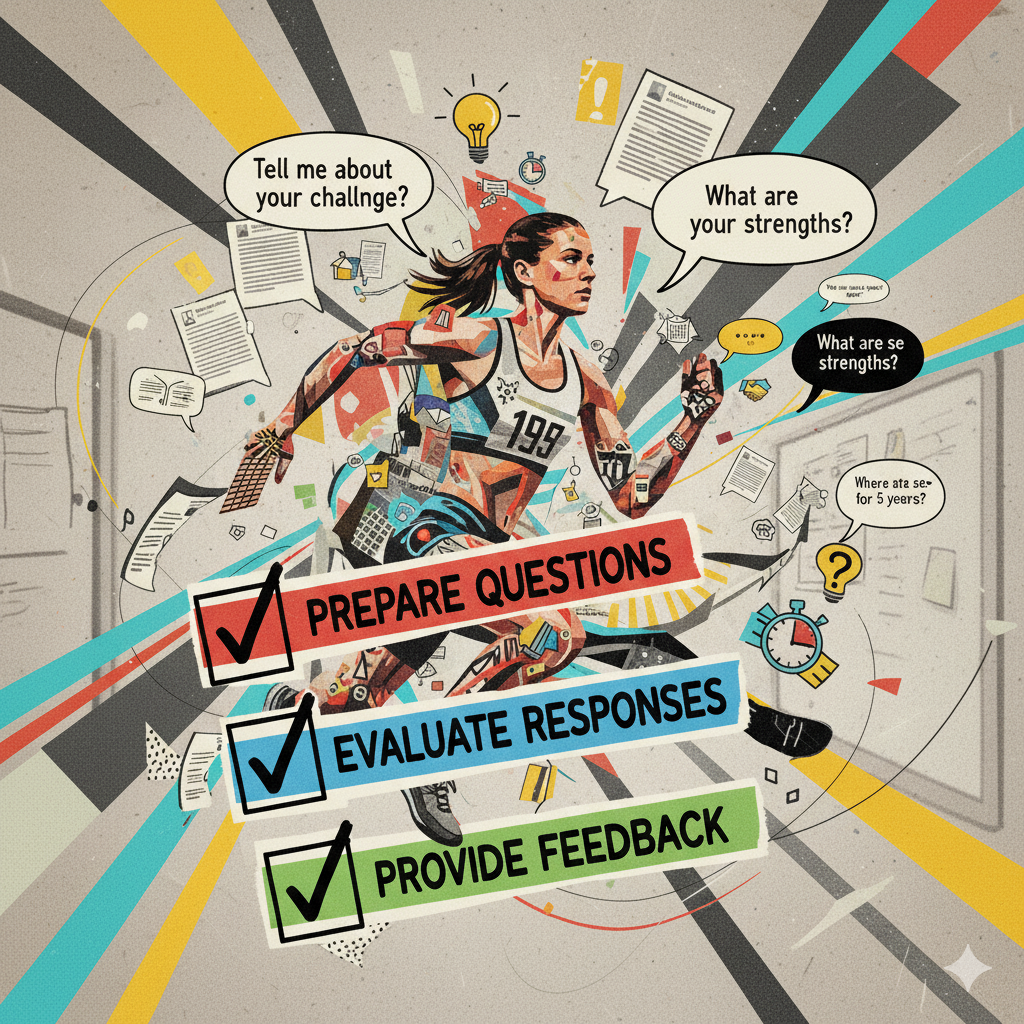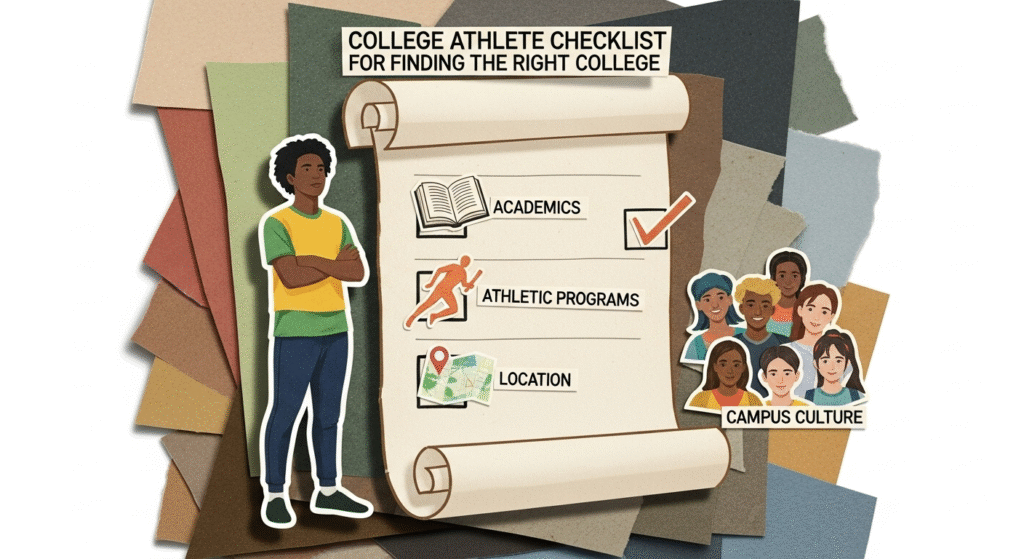Your Recruitment Checklist: Introduction
The path to collegiate high jumping can feel daunting, filled with unknowns and critical deadlines. It’s easy to feel overwhelmed, wondering if you’re missing a step or falling behind. But what if you could take control, gaining clarity and confidence through every stage? For aspiring-collegiate-high-jumpers, a clear plan is key to managing this exciting period. This guide presents Your Recruitment Checklist, designed to provide structure and peace of mind, ensuring you stay organized and on track toward your college dreams.
Setting the Pace: Building Your Recruitment Checklist
The real benefit of this early planning isn’t just efficiency; it’s the profound sense of calm it brings. Imagine the clarity you’ll have, understanding precisely what kind of talent you need, where to find them, and how you’ll assess their fit. Your checklist should begin with a crystal-clear job description, detailing not just duties, but the core competencies and cultural contributions you seek. This acts as your North Star. Next, map out your sourcing strategy: where will you look for these ideal candidates? Will it be job boards, professional networks, or direct outreach? Having this plan laid out minimizes wasted time and keeps you focused.
Then comes the initial screening criteria. Before you look at a single resume, define what non-negotiable skills or experiences a candidate must possess. This step alone can save countless hours. Follow that with developing your initial interview questions, structured to uncover both technical ability and alignment with your team’s values. By front-loading this work, you create a fair, consistent process for every applicant, which is crucial for making objective decisions. This systematic approach reduces bias, helps you communicate effectively with hiring managers, and ensures you’re all speaking the same language. It’s about building a process that validates your efforts and leads to superior hires, strengthening the entire organization. When you invest time upfront in your recruitment checklist, you’re not just organizing tasks; you’re investing in the future stability and success of your team.
Key Points
- An early recruitment checklist provides control and predictability, reducing stress in the hiring process.
- The checklist helps define a clear path from understanding talent needs to making intentional hiring decisions.
- Key components include a clear job description, a defined sourcing strategy, and initial screening criteria.
- Developing interview questions upfront ensures a fair, consistent, and objective assessment process.
- Upfront planning validates efforts and leads to better hires, contributing to organizational stability and success.
Practical Insights
- Start by drafting a detailed job description that goes beyond tasks to include desired competencies and cultural fit – this sets your core criteria.
- Before any outreach, outline your candidate sourcing strategy (e.g., specific platforms, networking events) to ensure focused and efficient talent acquisition.
- Pre-define your non-negotiable screening criteria and initial interview questions to create a consistent, fair, and objective evaluation process for all applicants, boosting confidence in your selections.

Clearing the Hurdles: Academic and Athletic Milestones on Your Recruitment Checklist
First up, academics. You hear it all the time, but it’s true: your grades matter. College coaches aren’t just looking for top-tier talent; they’re looking for students who can handle the demands of college coursework. Maintaining a strong GPA, challenging yourself with tough classes, and preparing for standardized tests like the SAT or ACT are non-negotiable. Think of it this way: every good grade is a step towards showing you’re a responsible, dedicated individual. It’s about more than just eligibility; it’s about proving you have the discipline to succeed, offering a sense of control over your educational path and opening doors to growth. Make sure you’re regularly checking in with your counselors to confirm you’re on track with NCAA eligibility requirements, ensuring no surprises down the line.
Then there’s the athletic side. This is where your passion truly shines. Consistent performance, measurable improvement, and a strong work ethic are critical. Are you setting personal bests? Are you a leader on your team? Coaches want to see someone who consistently strives for excellence and contributes positively to the team dynamic. This isn’t just about statistics; it’s about demonstrating resilience, a positive attitude, and how you handle pressure. Every practice, every game, every rep is an opportunity to show not just your skills, but your character. That dedication and improvement give you a real sense of validation and helps you feel a stronger sense of belonging to the sport you love. Make sure your highlight reels are updated and accurately reflect your current abilities, showcasing your progress over time.
Keeping track of these milestones on your Recruitment Checklist gives you a powerful sense of control. You’ll know exactly where you stand and what needs your attention next. It reduces that nagging worry about missing something important. Regularly review your progress with your parents, coaches, or a trusted advisor. This accountability helps you stay focused and gives you the support you need to keep pushing forward. Remember, this whole process is about presenting your best self – both in the classroom and on the field – and making sure you feel good about every step you take towards your college dream.
Key Points
- Strong academic performance, including GPA and challenging coursework, is fundamental for college eligibility and demonstrating discipline.
- Consistent athletic performance, measurable improvement, and strong character are essential for impressing college coaches.
- Regularly updating athletic highlight reels and tracking personal bests are important for showcasing ongoing growth.
- Utilizing your recruitment checklist provides structure, reduces anxiety, and ensures you remain focused on key milestones.
- Frequent check-ins with parents, coaches, or advisors maintain accountability and provide crucial support throughout the recruitment process.
Practical Insights
- Set clear academic goals each semester; aim for consistent high grades in challenging courses to demonstrate a strong work ethic and intellectual curiosity, giving you control over your academic narrative.
- Focus on measurable athletic improvements, not just participation. Track your stats, personal bests, and leadership contributions to validate your progress and appeal to coaches.
- Schedule monthly check-ins with a mentor or parent to review your academic and athletic progress against your checklist, reinforcing your sense of direction and helping you feel supported.
Effective Outreach: Navigating Communication with Your Recruitment Checklist
Think about it: every touchpoint with a candidate is a chance to make them feel seen and valued. From that initial outreach to scheduling interviews, providing feedback, and eventually extending an offer, consistency is key. A well-defined checklist ensures that no candidate falls through the cracks, and that every communication is timely and professional. It’s about more than just remembering to send an email; it’s about crafting an experience that makes candidates feel respected, confident that they are part of a transparent process, and that their time is valued. This methodical approach reduces anxiety for both you and the candidate, creating a smoother path for everyone involved.
Your checklist should detail not just *what* to communicate, but also *when* and *how*. Did you send a confirmation for the interview? Was feedback provided within your promised timeframe? Is the offer letter clear and comprehensive? Each point on your checklist serves as a reminder to uphold a standard of communication that not only reflects well on your organization but also strengthens your bond with potential hires. When candidates feel well-informed and respected, they are more likely to engage genuinely, and even if they don’t accept this particular role, they’ll remember the positive experience, perhaps even becoming advocates for your company. This commitment to clear, consistent communication helps you attract and secure top talent, fostering a sense of belonging for new team members even before they officially join.
Key Points
- Consistent and timely communication is vital for a positive candidate experience and successful recruitment.
- A recruitment checklist provides structure, ensuring no candidate is overlooked and every communication step is followed.
- Detailing what, when, and how to communicate on your checklist helps maintain professionalism and build candidate trust.
- Effective communication makes candidates feel valued, reduces stress, and strengthens their connection to your organization.
- Adhering to a communication checklist enhances your employer brand and aids in attracting high-quality talent.
Practical Insights
- Implement a ‘communication calendar’ within your checklist, setting specific deadlines for follow-ups, feedback, and offer letters to maintain control over your outreach timeline.
- Standardize key communication templates (e.g., interview confirmations, feedback requests) to ensure clarity and consistency, making every candidate feel heard and respected.
- After each major communication step, take a moment to review your checklist. This simple habit will help you keep things organized and prevent crucial steps from being missed, giving you peace of mind.
The Official Visit: What to Expect on Your Recruitment Checklist
Key Points
- Official visits allow you to connect with coaches and current athletes to evaluate the program’s fit.
- The visit covers travel, campus tours, facility inspection, and academic meetings.
- Your observations of team dynamics and questions about academic support are crucial for assessing the environment.
- Spending time with the team helps you determine if you feel a sense of belonging and can envision your future there.
- A successful visit provides a clear picture of life as a student-athlete, empowering you to make an informed decision.
Practical Insights
- Before your visit, make a list of specific questions about academics, team culture, and support systems to gain control over your decision-making process.
- Actively observe how current athletes interact and assess if their energy and values align with your own, fostering a sense of potential belonging.
- Focus on clear communication with coaches and team members to ensure you feel seen and heard, securing validation for your goals and concerns.
Making the Leap: Final Decisions with Your Recruitment Checklist
This is precisely where your recruitment checklist becomes your most powerful tool. It’s not just for the early stages; it’s your anchor in these final, critical moments. Think of it as your objective playbook, allowing you to cut through the noise and any lingering doubts. By systematically reviewing each candidate against your established criteria – not just their skills, but their alignment with your team’s values and culture – you regain a strong sense of control. This structured approach helps ensure you’re making a data-driven choice, rather than relying solely on a fleeting feeling, giving you the certainty that comes from a well-prepared decision.
When you approach the final decision with your checklist, you’re not just hiring; you’re building. You’re ensuring that the individual you bring in will contribute positively, fostering a stronger connection within your team and driving collective growth. This thoroughness provides immense personal validation; you’ll know you’ve done your due diligence and made a choice you can stand by, confidently explaining your reasoning to others. It helps eliminate that nagging feeling of ‘what if,’ replacing it with clarity and purpose.
So, as you prepare to extend that offer, take one last, intentional look at your checklist. Did they meet the key competencies? Do their answers reflect the core values you cherish? How will their presence enhance your team dynamics? By answering these questions honestly and systematically, you move from hesitation to conviction. You’re not just filling a role; you’re investing in your future, securing your team’s success, and solidifying your own reputation for making smart, impactful decisions.
Key Points
- Final hiring decisions are high-stakes, impacting team future and personal confidence.
- The recruitment checklist provides objective structure, reducing anxiety and increasing control in the final stages.
- Systematically reviewing candidates against criteria ensures data-driven decisions, not just gut feelings.
- A diligent final check fosters team connection and supports collective growth.
- Using the checklist validates your decision-making, offering confidence and clarity.
Practical Insights
- Before making a final offer, always review your checklist one last time to ensure all key criteria, including cultural fit, have been objectively assessed.
- Use your checklist to articulate and justify your hiring decision, solidifying your confidence and providing a clear rationale to stakeholders.
- Consider how each top candidate aligns with your team’s existing dynamic and values, using the checklist to visualize their potential positive contribution and foster team connection.

Your Recruitment Checklist: Conclusion
With Your Recruitment Checklist in hand, the path to becoming a collegiate high jumper becomes clear and manageable. You gain the control needed to confidently approach each step, from initial outreach to making your final decision. By staying organized and following a structured plan, you can focus on what truly matters: your athletic and academic development. Take charge of your future, one checked box at a time.
Coach Otto is a certified track and field coach with over 15 years of experience working with high jumpers at high school, collegiate, and elite levels.

